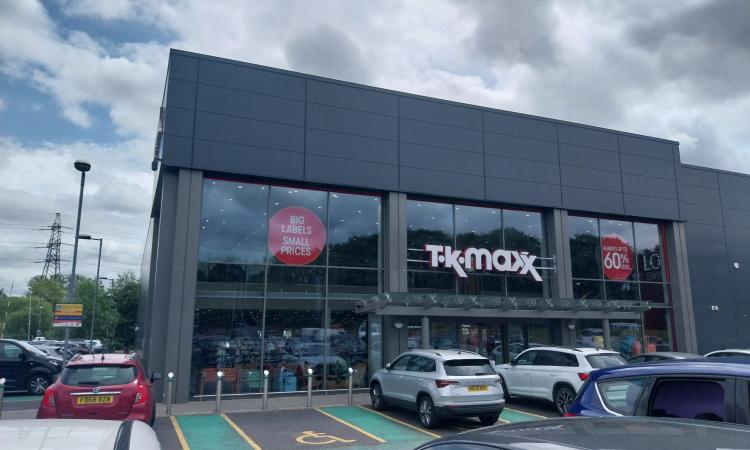A Market in Transition
After several years of uncertainty, the UK retail property market is showing signs of renewed life, particularly across the Oxford-Cambridge Growth Corridor, according to the latest data from leading property consultancy Bidwells.
Investor sentiment for retail has strengthened across the region. Over the 12 months to June 2025, retail investment transactions in the Arc totalled £751 million, marking a 20% increase on the previous year, although still less than half the peak seen in 2013. That being said, this recovery signals a growing belief that the sector’s reinvention is gathering momentum.
Supermarkets and out-of-town retail parks are leading the retail resurgence. Both are proving resilient against the challenges of online retail, offering the convenience and accessibility that today’s consumers demand.
Prime Retail Warehouse Yields
Supermarkets have the added appeal of index-linked rents which have made them particularly attractive to investors during a period of higher inflation and retail parks have become less dependent upon DIY and electrical retailers, as fashion, health and gym operators have relocated to out-of-town locations.
Prime yields on retail warehousing have compressed by 75 basis points over the past 18 months, now standing at 5.5% in Oxford and Cambridge and 6.0% - 6.75% across the rest of the Growth Corridor, and are now lower than prime high street yields, suggesting investors expect stronger rental growth in the out-of-town segment.
Prime High Street Retail Yields
Investors remain cautious of town centres, given the growth of on-line shopping, a new wave of bank closures and the current pressures on the hospitality sector. Oxford and Cambridge are exceptions, where prime retail yields fell to 5.75% in June, from 6.75% a year ago. Both cities benefit from significant tourism and retail vacancy has fallen as empty units (e.g. Debenhams in Oxford, Grafton Centre in Cambridge) are being re-developed for other uses, including laboratory space.
By contrast to Oxford and Cambridge, prime yields for high street shops in other parts of the UK remain elevated at 8.5-10.0%.
A Spotlight on In-Town Retail
Across the Growth Corridor, Cambridge continues to strengthen, with falling voids and new entrants in food and beverage driving rental growth as availability tightens. Oxford, meanwhile, illustrates the sector’s adaptive nature. The Westgate Centre thrives with new brands such as Sephora, Miniso, and Route One, while Cornmarket Street adjusts to temporary voids amid the mixed-use redevelopment of Clarendon Centre, which will see a variety of R&D facilities, offices and retail uses, reinforcing the city’s economic diversity.
Looking across East Anglia, Chelmsford’s Meadows Shopping Centre redevelopment, and new food and beverage entrants such as Gails and Cornish Bakery are improving its overall high street appeal. Norwich retains one of the most diverse independent retail scenes in the region, a strength that underpins steady rental growth. Ipswich, by contrast, continues to face challenges with an evolving customer base and lingering vacancies, though the rise of independents provides a glimmer of optimism.
Out-of-Town Retail Performance
Across the region, retail parks are maintaining strong momentum. Availability has edged up in some areas, particularly with closures such as Homebase, but vacancy rates remain below 5% in four of six key centres.
Discount operators such as Home Bargains, B&M, Lidl, and Aldi remain highly active, while gym operators have become an important new tenant category, boosting all-day footfall.
Yet, supply constraints are emerging as a significant theme. In Cambridge and Oxford, where planning permissions have been granted to repurpose retail parks for mixed-use residential and life science developments, the out-of-town retail stock is set to contract, this will likely increase the upward pressure on rents.
Milton Keynes has seen availability rise, but there is evidence of landlords adjusting incentives and repositioning assets through drive-thru units, leisure, and open-use tenants to maintain relevance.
Consensus Forecasts
The IPF Summer 2025 Consensus Forecasts present a positive picture for the retail sector. Standard Retail, Shopping Centre and Retail Warehouse sectors are forecast to deliver a total return in 2025 of 7.9%, 9.4% and 8.6% respectively.
Over the five years to 2029, Retail Warehouses and Shopping Centres are forecast to outperform the industrial sector, with total returns averaging 8.4%. This represents a remarkable turnaround for a sector long viewed as under pressure. With improved confidence, tightening availability, and renewed investor engagement, retail’s next chapter looks far more dynamic.
Retail’s New Normal
Across the UK, retail continues to redefine its purpose. The strongest centres are those blending experience, convenience, and community, from thriving out-of-town hubs to reinvented urban cores.
Consumers are increasingly destination-driven, prioritising leisure and social interaction alongside shopping. At the same time, investors are becoming more selective, focusing on assets aligned with resilient local economies and growth sectors such as tourism, technology, and life sciences, which strengths all that the Oxford to Cambridge Growth Corridor embodies.

